Three consecutive nights with temperatures below ten degrees (Fahrenheit), with the second freeze falling to two below zero, have destroyed the remaining yellow blooms of late autumn and early winter flowering mahonias (Mahonia x media ‘Winter Sun’, before and after, below). All of several cultivars were tardy flowering in November, but then also slow to fade in January.
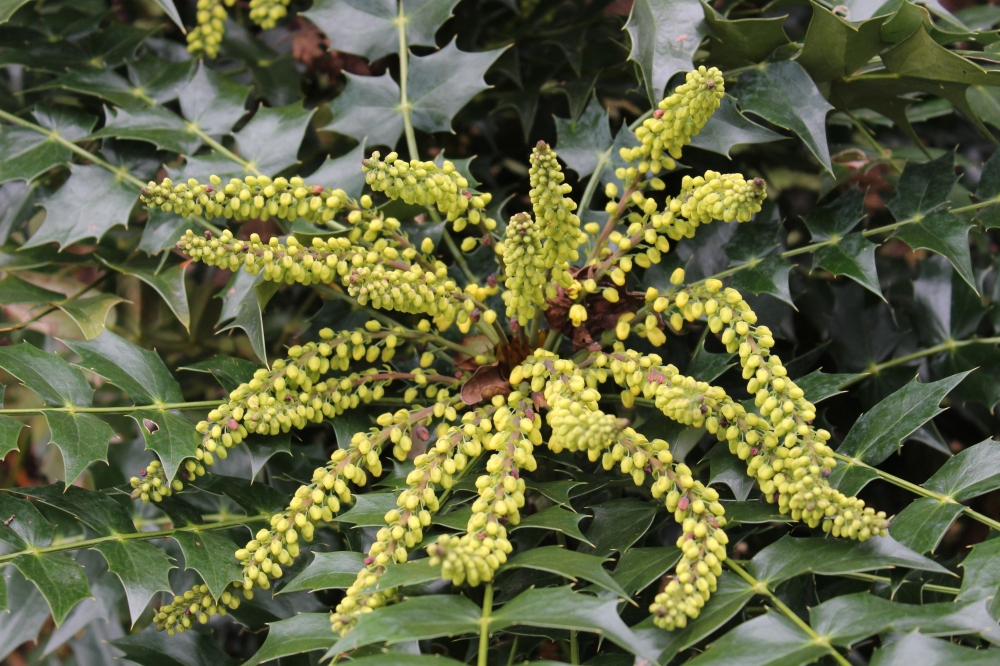
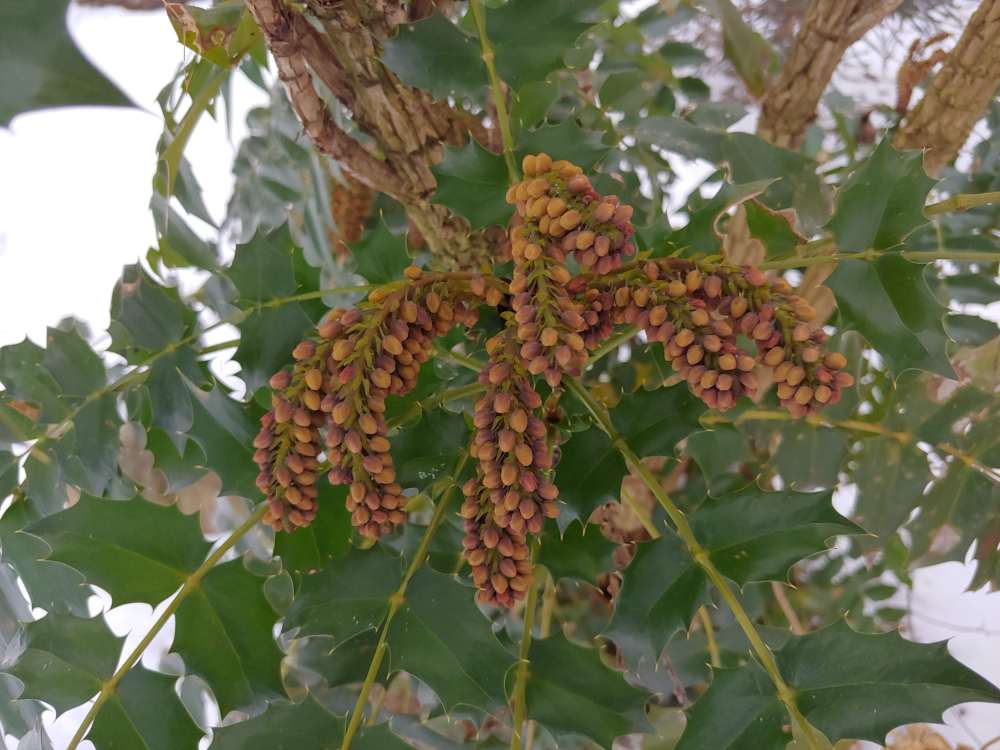
In recent weeks, mahonias were joined in bloom by Vernal witch hazels (Hamamelis vernalis), one large, shrubby tree and two younger, considerably smaller shrubs. Flowers of the large witch hazel are variable year to year, and though blooms are more scattered than usual, all are a brighter yellow than I’ve seen before. To greet the cold, the ribbon-like flowers pull tightly together (before and after, below), and experience tells me that there will be no damage to blooms that typically open in the coldest days of our Virginia winters.

Swelling flower buds of hybrid witch hazels ‘Arnold Promise’, ‘Jelena’, and ‘Diane’ have retreated into a tighter bud, but with warming temperatures forecast these will quickly expand. I expect flowers of the hybrids to soon join the Vernal witch hazels.
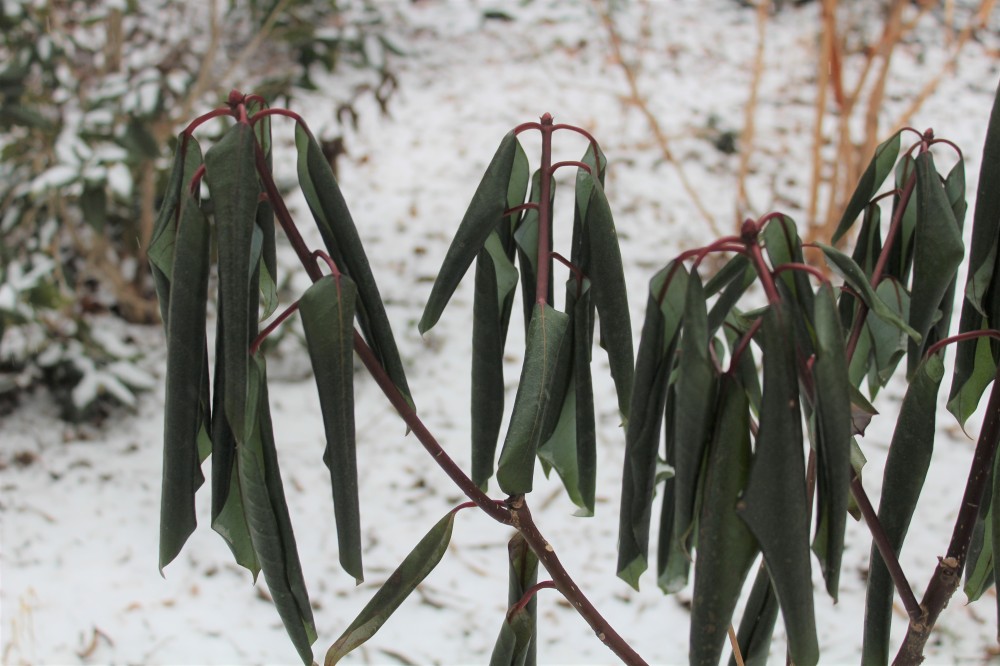
On a seventeen degree afternoon, much of the garden has grumpily retreated into some form of protection from the cold. Leaves of camellias and rhododendron are curled, with rhododendron-like leaves of daphniphyllum (Daphniphyllum macropodum, above) curled nearly into a cylinder. Other leaves show varying, but obvious signs of adjustment to the extended cold.
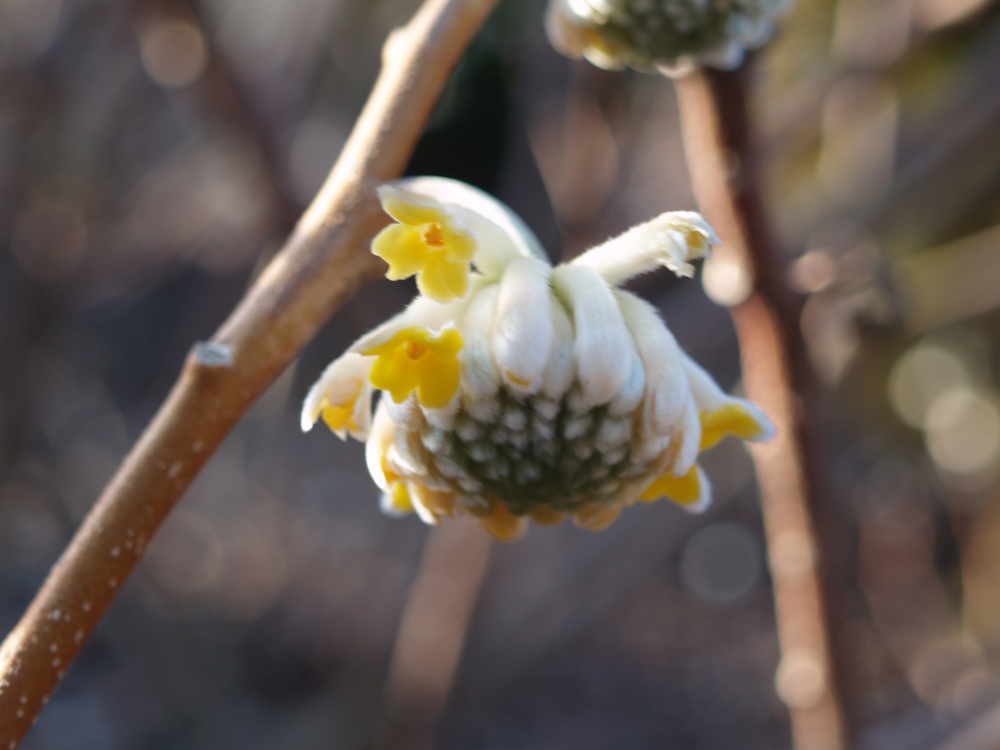
In a few days, with fifty and perhaps sixty degree temperatures, I expect a more lively appearance from all, though I will be monitoring marginally cold hardy flower buds of paperbushes (Edgeworthia chrysantha) that have been damaged in prior years when temperatures approached zero. Today, buds appear undamaged, but tomorrow? Otherwise, the milder days will be welcome relief from this brief spell of cold, for the garden and gardener.
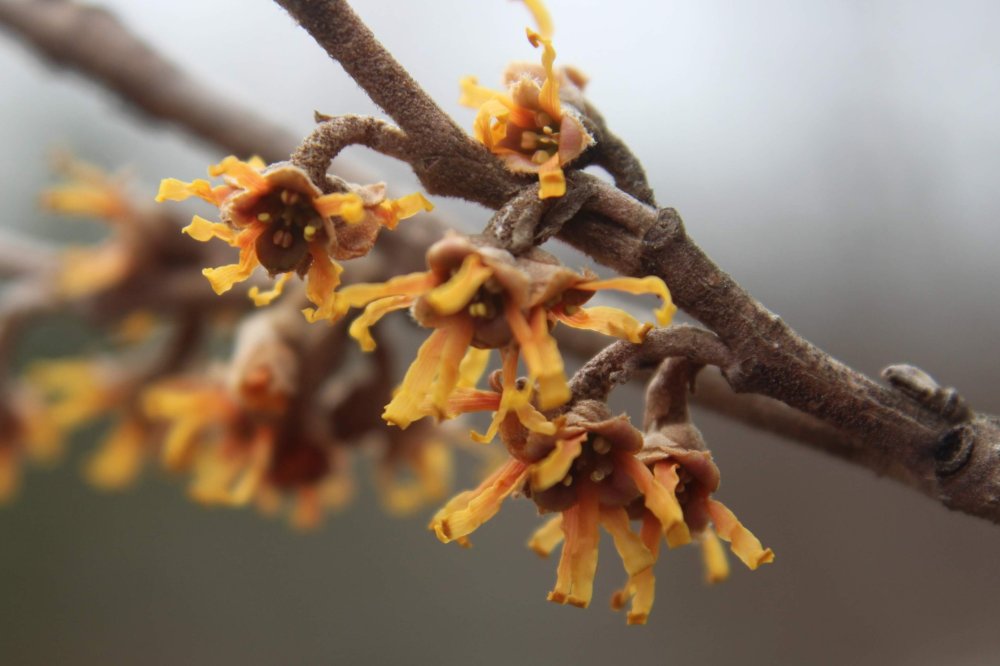
Growing up on Long Island, NY, my mother used to decide how to dress us to go out on winter mornings based on how tightly the leaves of the large Rhododendron next to the house were curled.
Normal-colored green flat leaves meant well above freezing, “cigar” leaves meant in the low 30’s, normal-colored “cigarette” leaves meant in the 20’s, & blackish-green colored tightly-curled “pencils” meant in the teens or below.
I still use that method as a quick temp gauge here in Culpeper – lol!
I’m uncertain how to describe the difference in the garden between regular nights in the teens, and a drop below zero, but even very cold hardy evergreens turned an off color. Today, I expect all will return to normal.
Dear Dave,
I love the pictures of the flowers and leaves all curled up for protection against the cold. I’d never really thought about that! Hope the weather improves soon there. Lots of rain here. 😀
We are 50% up in rain/snow this year, after a year when we were almost double. Fortunately, a month is a small sampling, and there is no reason to expect another year as wet as last year.
I’ve wanted to plant witch hazels, but felt sure our wicked, unpredictable weather would always ruin the flowers. Maybe I’ll give them a try after all…..
In 2015, with three nights below zero and a low of seven below, there was no damage to witch hazels flowers. I expect that most witch hazels are cold hardy, and flowers will not be ruined by much colder temperatures than we’ll get in Virginia.
Is vernal witch hazel native? The classic witch hazel that is so common in most regions is not even available here. Our native hazel is completely different, and does not even provide colorful foliage in autumn.
Vernal witch hazel is commonly called Ozark witch hazel, native from the western side our our east coast mountain ranges (tall hills?) through Arkansas. Here, all the witch hazels I know of also have good autumn foliage color.
Ozark witch hazel sounds even more appealing.
Is your fatsia japonica holding out OK?
The fatsia is not obviously dead, so that’s good. I expected to see more damage to soft wooded stems, so the day after, I’m encouraged. Actually, I’m surprised. I expected it to melt like a tropical left outdoors a day too long into an autumn freeze.
Oh, the poor plants – I hope they will all recover to bounce back healthfully soon! 🙂
I’ve lost plants to low temperatures before, and certainly this will happen again. The fatsia and anise shrub were a bit of an experiment, and while I hope they survive, it will not be terribly disappointing if they don’t. At least, I hope the ones that I’ve protected survive.
I want a mahonia and a paperbush.
Mahonias are relatively common in local garden centers. Best performers for me have been autumn and early winter flowering ‘Winter Sun’ and ‘Charity’, and the early spring flowering Leatherleaf (Mahonia bealei). Leatherleaf mahonia has a moderate tendency to seed, and in some areas I see that it’s called an invasive, though I haven’t experienced seeding to that degree. I’ve tried other mahonias, but some suffer considerably in the cold in this area. Paperbush can be a little more difficult to find, but it’s becoming a bit more common.